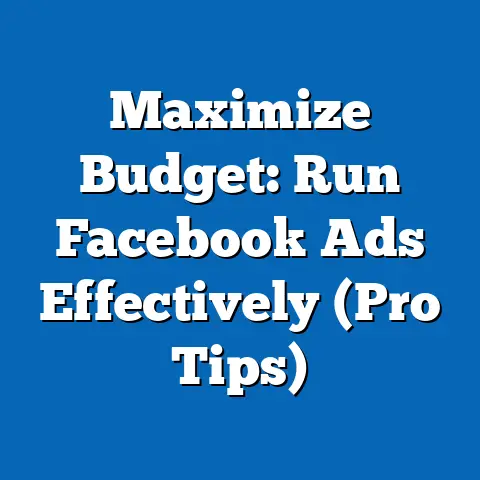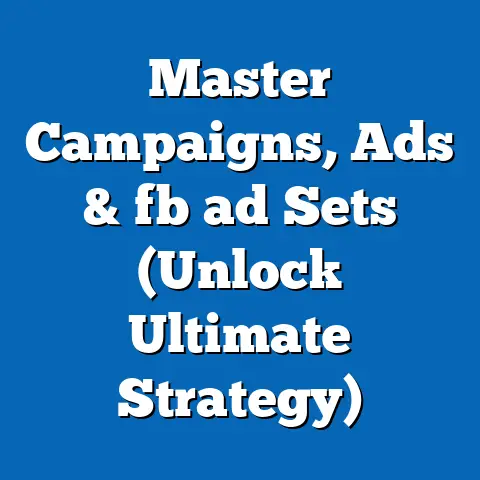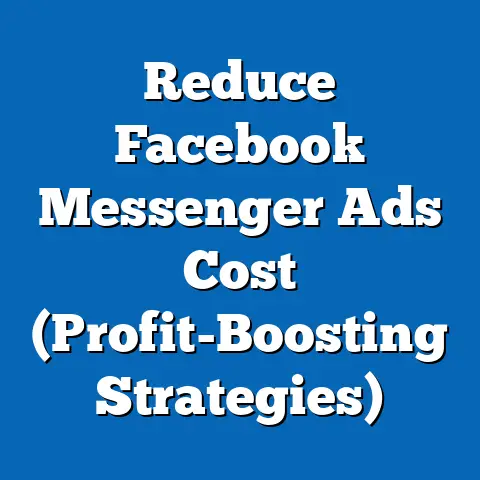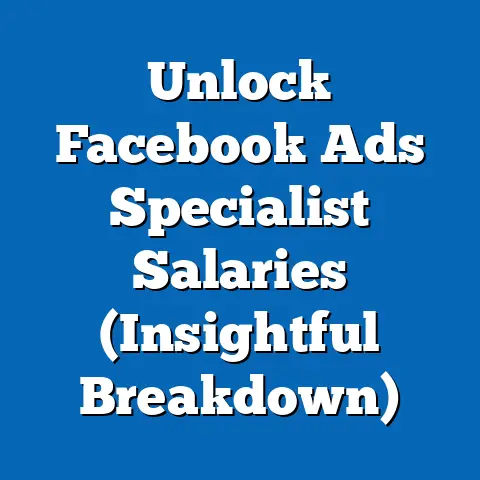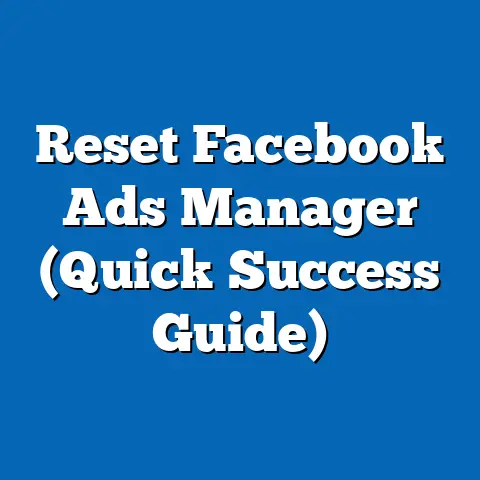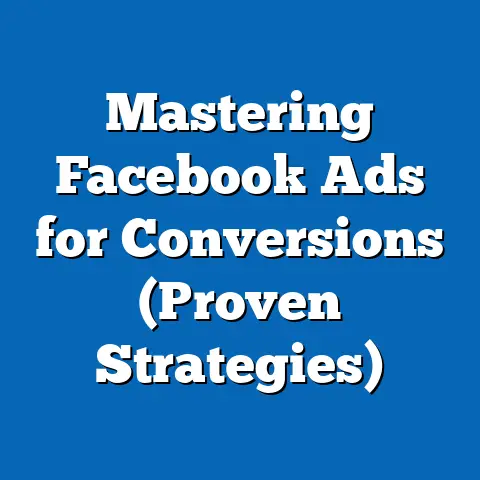CPM vs. CPC in Facebook Ads (Unlock Revenue Strategies)
Imagine your home. You’re constantly looking for ways to save energy, right? Switching to LED bulbs, unplugging appliances, and optimizing your thermostat settings – all in the name of efficiency and lower utility bills. Well, running Facebook ads is surprisingly similar. You’re essentially trying to power your business’s growth, and just like with energy, you want to get the most bang for your buck. Understanding the different advertising pricing models, specifically Cost Per Mille (CPM) and Cost Per Click (CPC), is like knowing the difference between a power-hungry incandescent bulb and an energy-efficient LED. Choosing the right one can drastically impact your ROI and ultimately boost your revenue. I’ve seen firsthand how businesses, both big and small, have transformed their Facebook ad performance simply by understanding and strategically applying these models. Let’s dive in and see how you can unlock new revenue opportunities by becoming more “energy-efficient” with your Facebook ad spend.
Understanding CPM and CPC
Before we dive into the nitty-gritty, let’s make sure we’re all on the same page with the basics. Think of CPM and CPC as two different ways Facebook lets you pay for your ads.
What is CPM (Cost Per Mille)?
CPM stands for Cost Per Mille, where “mille” is Latin for thousand. Simply put, it’s the cost you pay for every 1,000 impressions your ad receives. An impression means each time your ad is displayed to a user, regardless of whether they click on it or not. The calculation is pretty straightforward:
CPM = (Total Ad Spend / Total Impressions) x 1000
So, if you spend $20 on an ad campaign and it gets 10,000 impressions, your CPM would be $2.
Example: ($20 / 10,000) x 1000 = $2
CPM is often used when the primary goal is brand awareness. You’re not necessarily looking for immediate action; you just want to get your brand in front of as many eyeballs as possible. Think of it like a billboard – you pay to have it seen, hoping it resonates with viewers over time.
What is CPC (Cost Per Click)?
CPC, on the other hand, stands for Cost Per Click. As the name suggests, you only pay when someone actually clicks on your ad. This model is much more directly tied to user engagement and action. The calculation is even simpler:
CPC = Total Ad Spend / Total Clicks
If you spend $20 and get 50 clicks, your CPC is $0.40.
Example: $20 / 50 = $0.40
CPC is typically favored when you’re aiming for specific actions, such as driving traffic to your website, generating leads, or making direct sales. It’s a performance-driven model where you’re paying for tangible engagement.
Scenarios: CPM vs. CPC
To illustrate the difference, let’s consider two scenarios:
- Scenario 1: New Coffee Shop Launch: A brand-new coffee shop wants to create buzz in its local community. They might opt for CPM to ensure a wide audience sees their ad, even if they don’t immediately rush in for a latte. The goal is brand recognition.
- Scenario 2: E-commerce Sale: An online clothing retailer is running a flash sale. They’d likely choose CPC to drive targeted traffic to their website, hoping that those clicks convert into immediate sales. The goal is direct conversion.
Takeaway: Understanding the mechanics of CPM and CPC is the first step in making informed decisions about your Facebook ad campaigns. Choose the model that aligns with your campaign goals.
The Benefits of CPM
Now, let’s explore the specific advantages of using CPM as a pricing strategy. While it might seem counterintuitive to pay for impressions rather than clicks, CPM can be incredibly effective under the right circumstances.
Brand Visibility and Reach
The biggest benefit of CPM is its ability to maximize brand visibility. When you’re paying for impressions, you’re essentially buying eyeballs. You’re ensuring that your brand is seen by a large audience, regardless of whether they take immediate action. This is particularly valuable when launching a new product, entering a new market, or simply trying to increase overall brand awareness.
I remember working with a local bakery that was struggling to gain traction. They had amazing products but weren’t getting the foot traffic they deserved. We ran a CPM campaign targeting users within a 5-mile radius, showcasing their delicious-looking pastries. Within a few weeks, they saw a significant increase in both online orders and in-store visits. The key was getting their brand in front of the right people, even if they didn’t click on the ad right away.
Cost-Effectiveness for Awareness Campaigns
CPM can often be more cost-effective than CPC for campaigns specifically designed to build brand awareness. The reason is simple: you’re not paying for action, you’re paying for exposure. This allows you to reach a much broader audience at a lower cost per person.
Think about it this way: if your goal is to reach 100,000 people, you might be able to do so much more affordably with CPM than with CPC, especially if your ad creative is visually appealing and memorable.
Long-Term Customer Engagement
While CPM might not drive immediate sales, it can be incredibly effective in fostering long-term customer engagement. By consistently exposing your brand to your target audience, you’re building familiarity and trust. This can lead to increased brand loyalty and repeat purchases over time.
Case Studies: CPM Success
Let’s look at a couple of real-world examples:
- Example 1: Coca-Cola’s “Share a Coke” Campaign: This iconic campaign relied heavily on brand visibility and emotional connection. They used CPM to get their personalized Coke bottles in front of as many people as possible, encouraging them to share photos and stories online.
- Example 2: Dove’s “Real Beauty” Campaign: Dove used CPM to promote their message of body positivity and self-acceptance. By focusing on impressions, they were able to reach a massive audience and spark a global conversation about beauty standards.
Takeaway: CPM is a powerful tool for building brand awareness, reaching a broad audience, and fostering long-term customer engagement. If your primary goal is visibility, consider CPM as a cost-effective option.
The Benefits of CPC
Now, let’s shift our focus to CPC and explore the advantages of paying only when someone clicks on your ad. This model is all about direct engagement and measurable results.
Direct Correlation to Conversions
The biggest benefit of CPC is its direct correlation to potential conversions. When someone clicks on your ad, they’re essentially raising their hand and saying, “I’m interested in what you have to offer.” This makes CPC ideal for performance-driven campaigns that prioritize immediate action, such as lead generation, sales, or app downloads.
Ideal for Performance-Driven Campaigns
If you’re running a campaign with a clear conversion goal in mind, CPC is often the way to go. You’re paying for tangible engagement, which means you can directly track the ROI of your ad spend. This makes it easier to optimize your campaigns and improve your results over time.
Measurable Results
CPC provides a wealth of data that you can use to fine-tune your advertising strategy. You can track which ads are driving the most clicks, which keywords are performing best, and which audiences are most receptive to your message. This allows you to make data-driven decisions and continuously improve your campaign performance.
Case Studies: CPC Success
Here are a few examples of successful CPC campaigns:
- Example 1: Lead Generation for a Software Company: A software company ran a CPC campaign targeting small business owners with ads promoting a free trial of their software. They tracked the number of leads generated from the clicks and were able to calculate the cost per lead (CPL) and optimize their campaign accordingly.
- Example 2: E-commerce Sales for an Online Retailer: An online retailer ran a CPC campaign promoting a specific product line. They tracked the number of sales generated from the clicks and were able to calculate the return on ad spend (ROAS) and adjust their bids to maximize profitability.
Takeaway: CPC is a powerful tool for driving targeted traffic, generating leads, and making direct sales. If your primary goal is conversion, consider CPC as a performance-driven option.
When to Use CPM vs. CPC
So, how do you decide which pricing model is right for your campaign? It’s not always a straightforward decision, and it depends on a variety of factors.
Key Factors to Consider
Here are some key factors to consider when choosing between CPM and CPC:
- Target Audience: Who are you trying to reach? If you’re targeting a broad audience with a general message, CPM might be more effective. If you’re targeting a niche audience with a specific offer, CPC might be a better choice.
- Campaign Objectives: What are you trying to achieve? Are you trying to build brand awareness, generate leads, or make sales? Your campaign objectives will heavily influence your choice of pricing model.
- Budget Constraints: How much money do you have to spend? CPM can often be more cost-effective for reaching a large audience, while CPC can be more efficient for driving conversions.
Analyzing Campaign Goals
Let’s break down how campaign goals influence your choice:
- Building Awareness: If your goal is to build awareness, CPM is likely the better option. You want to get your brand in front of as many people as possible, and CPM allows you to do that affordably.
- Driving Conversions: If your goal is to drive conversions, CPC is likely the better option. You want to target users who are most likely to take action, and CPC allows you to focus your spend on those clicks.
Industry Benchmarks
It’s helpful to have a sense of industry benchmarks when evaluating the performance of your CPM and CPC campaigns. While these numbers can vary widely depending on your industry, target audience, and ad creative, they can provide a general point of reference.
According to recent data, the average CPM on Facebook is around \$7, while the average CPC is around \$1. This means that you’re typically paying \$7 for every 1,000 impressions and \$1 for every click. Keep in mind that these are just averages, and your actual results may vary.
Takeaway: Carefully consider your target audience, campaign objectives, and budget constraints when choosing between CPM and CPC. There’s no one-size-fits-all answer, and the best choice will depend on your specific circumstances.
Unlocking Revenue Strategies Through Effective Ad Management
Choosing the right pricing model is just the first step. To truly unlock revenue strategies, you need to actively manage and optimize your Facebook ad campaigns.
A/B Testing
A/B testing is a critical component of effective ad management. It involves creating multiple versions of your ad and testing them against each other to see which one performs best. You can test different headlines, images, calls to action, and targeting options to see what resonates most with your audience.
Audience Segmentation
Audience segmentation is another powerful tool for optimizing your campaigns. It involves dividing your target audience into smaller groups based on demographics, interests, behaviors, and other factors. This allows you to create more targeted ads that are more likely to resonate with each specific segment.
Retargeting
Retargeting is a strategy that involves showing ads to people who have already interacted with your brand, such as visiting your website or engaging with your social media content. This can be a highly effective way to drive conversions, as you’re targeting users who are already familiar with your brand and have shown some level of interest.
Combining CPM and CPC
Don’t be afraid to combine both pricing models in your advertising strategy. For example, you might use CPM to build brand awareness and then use CPC to drive conversions among those who have already seen your ads.
Monitoring Key Performance Indicators (KPIs)
To measure the success of your campaigns, it’s crucial to monitor key performance indicators (KPIs) that matter most for revenue generation. These might include:
- Conversion Rate: The percentage of users who take a desired action, such as making a purchase or filling out a form.
- Cost Per Acquisition (CPA): The cost of acquiring a new customer.
- Return on Ad Spend (ROAS): The amount of revenue generated for every dollar spent on advertising.
By tracking these KPIs, you can identify areas for improvement and optimize your campaigns to maximize revenue.
Takeaway: Effective ad management involves a combination of A/B testing, audience segmentation, retargeting, and careful monitoring of key performance indicators. Combining CPM and CPC can create a balanced advertising strategy that maximizes both reach and engagement.
Conclusion
In the world of Facebook advertising, understanding the difference between CPM and CPC is like understanding the difference between a regular light bulb and an energy-efficient one. By mastering these pricing models and strategically applying them to your campaigns, you can significantly enhance your ROI and unlock new revenue opportunities.
Remember, CPM is best for building brand awareness and reaching a broad audience, while CPC is ideal for driving targeted traffic and generating conversions. Carefully assess your advertising goals, consider your target audience, and experiment with both pricing strategies to see what works best for your business.
Now, I encourage you to take what you’ve learned today and apply it to your next Facebook ad campaign. Don’t be afraid to test different approaches, monitor your results, and continuously optimize your strategy. Just like with energy savings, even small changes can add up to big results over time. Go out there and start unlocking new revenue opportunities through smart, energy-efficient Facebook advertising!

